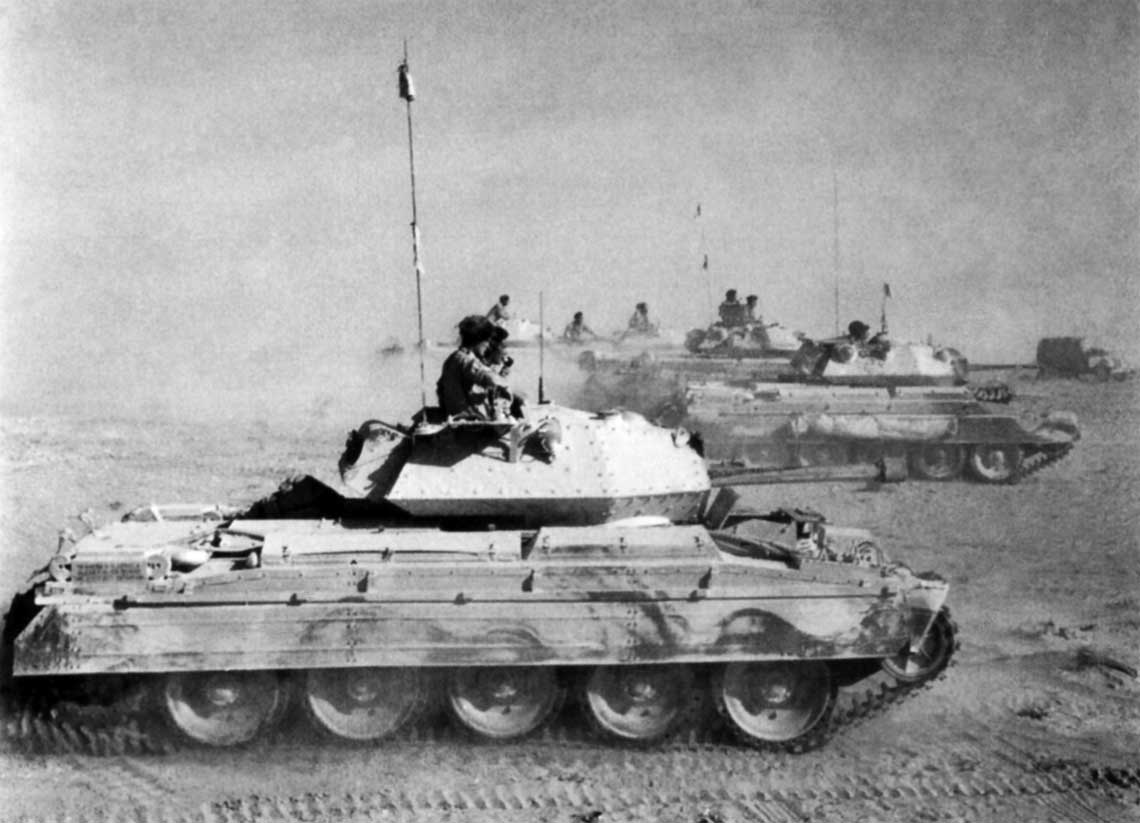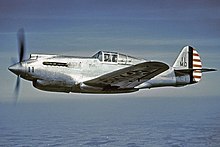
Armored forces of Great Britain 1939-1945. part 2

The A15 Crusader was the main type of British "fast" car during the fighting in North Africa in 1941-1942.
The participation of the 1st Armored Division and the 1st Armored Brigade of the Army in the French campaign of 1940 led to important conclusions regarding the organization and equipment of British armored formations. Not all of them could be implemented immediately, and not all of them were properly understood. It took more casualties and soldier blood to introduce new, more radical changes.
The British armored units evacuated from France lost almost all their equipment, so they had to be reorganized. For example, machine gun battalions were formed from the reconnaissance squadrons of the evacuated divisions, which were then combined into two machine gun brigades. These formations were equipped with trucks, machine guns, and homemade and conventional
armored vehicles.
The new organizational and staffing scheme of the armored division still provided for its division into two armored brigades and a support group, however, in addition to three tank battalions, each armored brigade also included a motorized rifle battalion with four companies on Universal Carrier armored personnel carriers (three platoons in a company, only 44). in the battalion) and on light wheeled reconnaissance vehicles Humber (company reconnaissance platoon) and the commander's platoon, in which she was, among others, two 76,2-mm mortar sections. Each of the new tank battalions was to consist of three companies, four platoons, three fast tanks each (16 per company - with two fast tanks and two support tanks, with a howitzer instead of a cannon in the command compartment), a total of 52 tanks with four fast tanks in the commander's platoon of the division. In addition, each battalion had a reconnaissance platoon with 10 light wheeled reconnaissance transporters. The armored brigade, having three battalions and 10 fast tanks in the control company, had nominally 166 tanks (and 39 light wheeled armored vehicles, including 9 in the brigade command), so there were 340 tanks in the two brigades of the division. , including eight tanks at division headquarters.
On the other hand, big changes have taken place in the support group. It now consisted of one fully motorized infantry battalion on trucks (without universal aircraft carriers), a field artillery squadron, an anti-tank artillery squadron and an anti-aircraft artillery squadron (as separate units instead of one composite), as well as two engineer units. companies and bridge park. The division was also replenished with a reconnaissance detachment in armored cars.
and light tanks.
The armored division, with a new staffing structure introduced in October 1940, consisted of 13 soldiers (including 669 officers), 626 tanks, 340 armored vehicles, 58 light wheeled reconnaissance transporters, 145 universal vehicles, 109 cars (mostly trucks) and 3002 motorcycles. .
Rise of the Desert Rats
The formation of another mobile division in Egypt was announced in March 1938. In September 1938, its first commander, Major General Percy Hobart, arrived in Egypt, and a month later the formation of a tactical alliance began. Its core was a light armored brigade consisting of: the 7th Royal Hussars - a light tank battalion, the 8th Royal Irish Hussars - a motorized infantry battalion and the 11th Royal Hussars (Prince Albert's own) - a Rolls-Royce armored car battalion. The division's second brigade was a heavy armored brigade with two battalions: the 1st RTC Battalion and the 6th RTC Battalion, both equipped with Vickers Light Mk VI light tanks and Vickers Medium Mk I and Mk II medium tanks. In addition, the division included a support group consisting of a field artillery squadron of the 3rd Regiment of the Royal Horse Artillery (24 94-mm howitzers), an infantry battalion of the 1st battalion of the Royal Fusiliers, as well as two engineer companies.
Immediately after the start of the war, in September 1939, the unit changed its name to the Panzer Division (no number), and on February 16, 1940, to the 7th Panzer Division. In December 1939, Major General Percy Hobart was - due to disagreements with his superiors - removed from his post; he was succeeded by Major General Michael O'Moore Creagh (1892–1970). At the same time, the light armored brigade became the 7th tank brigade, and the heavy armored brigade became the 4th armored brigade. The support group also officially changed its name from Pivot Group to Support Group (the rod is a lever that increases the carrying capacity).
Gradually, the division received new equipment, which made it possible to equip the entire 7th Tank Brigade with tanks, and the third battalion of the 4th Tank Brigade in the form of the 2nd Royal Tank Regiment was added to it only in October 1940. The 7th Hussars with its armored cars - the transfer of this unit to the level of the division as a reconnaissance squadron, and in its place - the tank battalion of the 11th Royal Hussars, which was transferred from the UK.

